Washing & Blocking Shawls - Part two
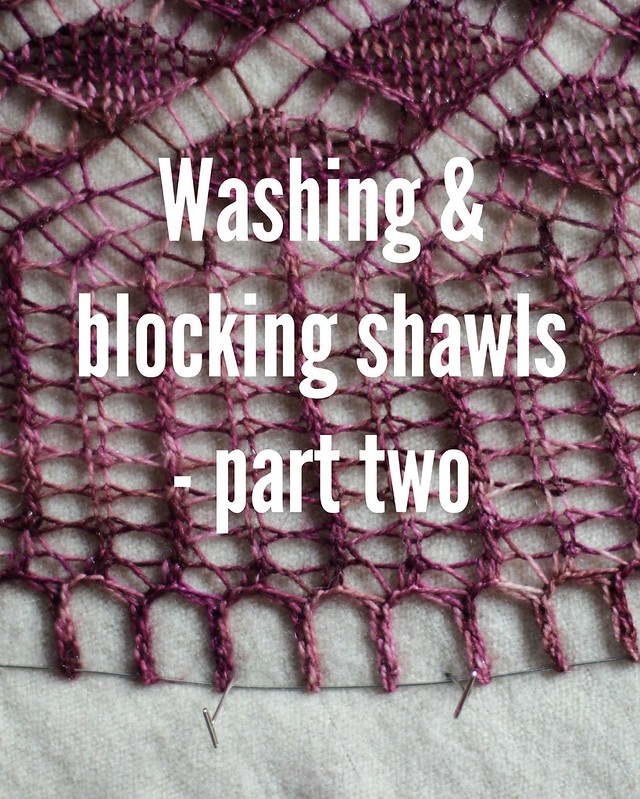
Righto, so you've followed part one - soaked your shawl and rolled it in a towel - now what? Blocking. That's what.
Pinning out a shawl is a slow business. I often take between 30 minutes and an hour to pin out a shawl.
Pinning out a shawl is a slow business. I often take between 30 minutes and an hour to pin out a shawl.
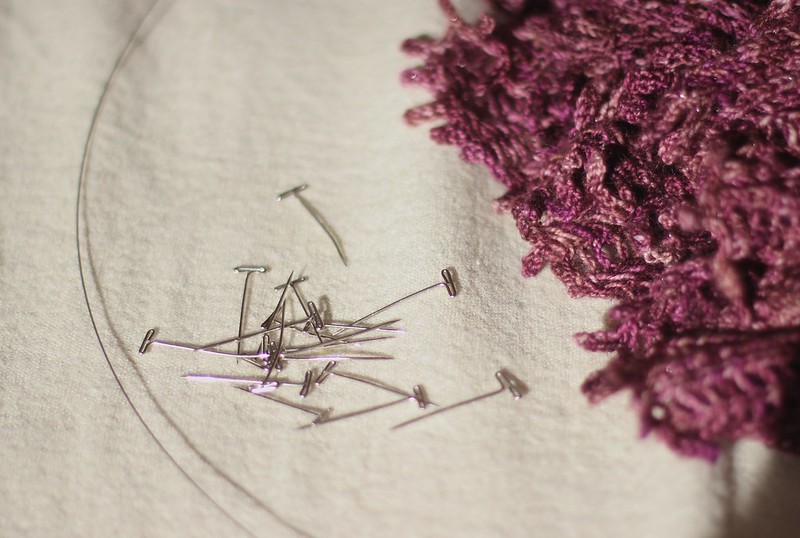
1. Find a space to lay out your shawl and grab your tools. Then stretch your shawl firmly but gently along the whole top edge (especially the centre) to stretch it out as much as possible.
I like to block my shawls on the floor so I can spread them right out, crawl around and view them easily from above. There are lots of things you could use to spread your shawl out on. I use a large wool blanket and pin through that into the carpet. If you have wooden floors you'll probably want to invest in some foam pads. You can buy blocking mats although some people make do with yoga mats and kids foam puzzles.
I have recently started using blocking wires and I absolutely love them. I was a bit daunted until I tried them and realised how simple they were to use and how much easier it made things. At the very least I recommend T pins. They're strong and long and perfect for holding your shawl in place while it dries. You can use them on their own or together with wires.
My blocking wires are made by Lazadas. I've got a set of long blocking wires (which came with some pins).
I like to block my shawls on the floor so I can spread them right out, crawl around and view them easily from above. There are lots of things you could use to spread your shawl out on. I use a large wool blanket and pin through that into the carpet. If you have wooden floors you'll probably want to invest in some foam pads. You can buy blocking mats although some people make do with yoga mats and kids foam puzzles.
I have recently started using blocking wires and I absolutely love them. I was a bit daunted until I tried them and realised how simple they were to use and how much easier it made things. At the very least I recommend T pins. They're strong and long and perfect for holding your shawl in place while it dries. You can use them on their own or together with wires.
My blocking wires are made by Lazadas. I've got a set of long blocking wires (which came with some pins).
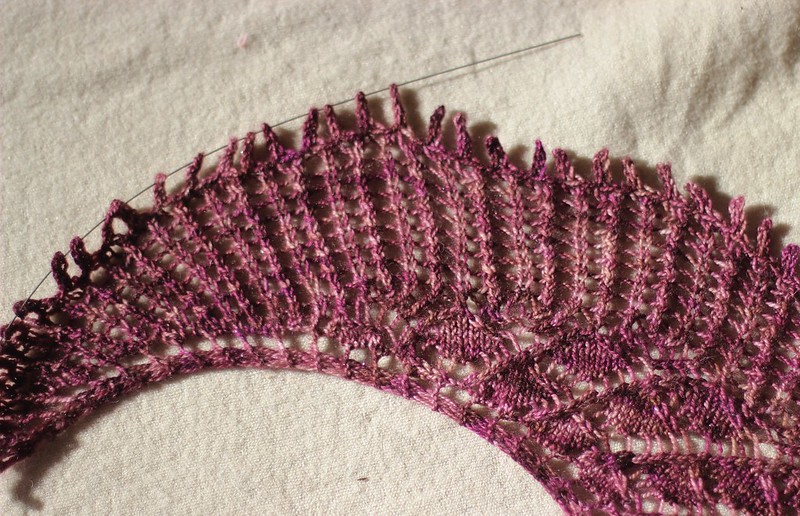
2. If you're using blocking wires - thread your wire through the stitches along the bottom of your shawl or the picot points if it has some. It takes a while but it's worth it.
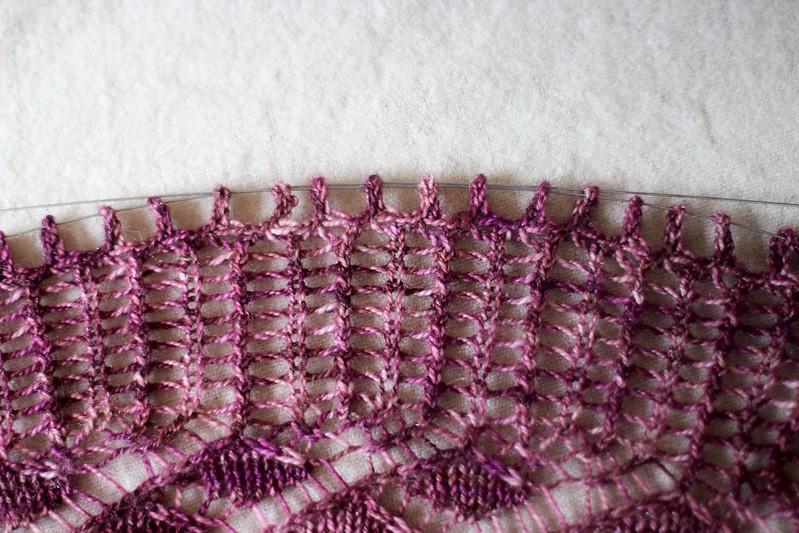
3. If your shawl is wide or your wires are short, use extra wires and overlap them where they meet for a few stitches. I tend to use two long wires for my shawls.
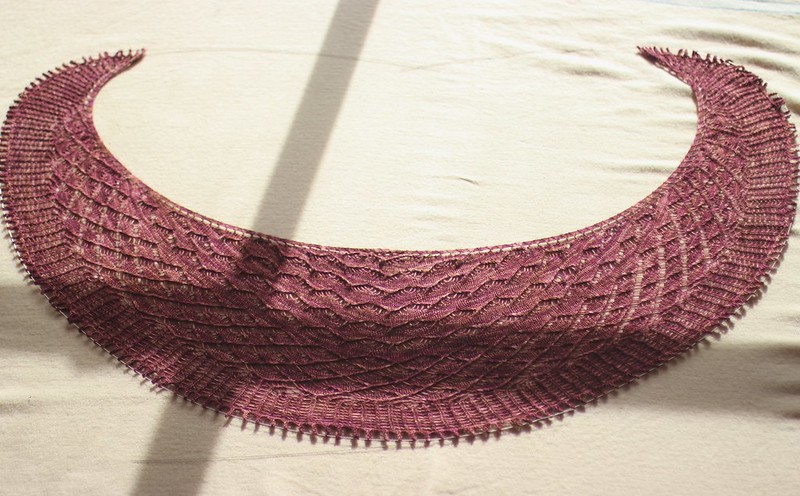
4. Lay your shawl out in roughly in the shape you're aiming for. You'll see that I've blocked crescent shawls in my photos. Notice that the top edge curves upwards. It may look like your shawl has a lump in the middle when you're knitting it but that lump can be flattened right out and curve upwards on itself. This will make the wingspan of your shawl wider and your shawl easier to wear.
If you're blocking a triangular shawl the top edge will (mostly) lie flat. But, sometimes triangular shawls will also curl up at the ends too (like my Southern Shawl) - it all depends on the way it's been increased along the edges of your knitting. Lots of edge increases correlate to more steeply curved ends. Play around with your shawl and see how it wants to spread out.
If you're blocking a triangular shawl the top edge will (mostly) lie flat. But, sometimes triangular shawls will also curl up at the ends too (like my Southern Shawl) - it all depends on the way it's been increased along the edges of your knitting. Lots of edge increases correlate to more steeply curved ends. Play around with your shawl and see how it wants to spread out.
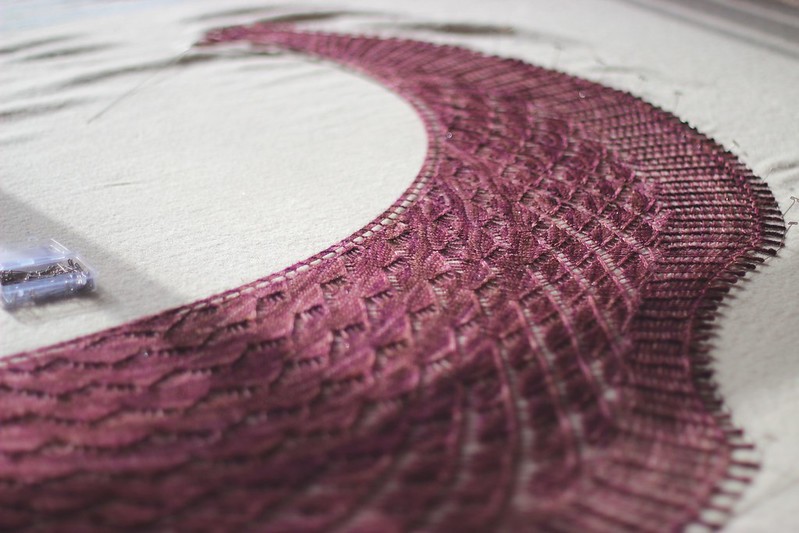
5. I usually start pinning at one corner, pulling the lace open. As you pull the border downwards and work your way around the shawl your top edge will tighten. You can keep gently but firmly stretching that top edge as you pin to get more length into your shawl. I usually end up re-pinning lots of times as I get the shape of the shawl just right.
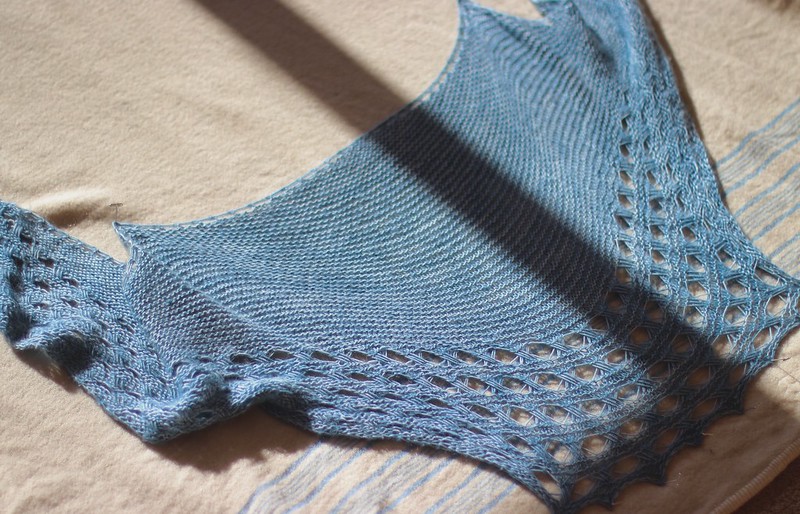
6. Sometimes I pin the top edge temporarily while I'm stretching and pinning the border out but I take those top edge pins out once I get going because the top edge will lie well without pins. It helps to get the corners pinned and then go back and readjust along the border.
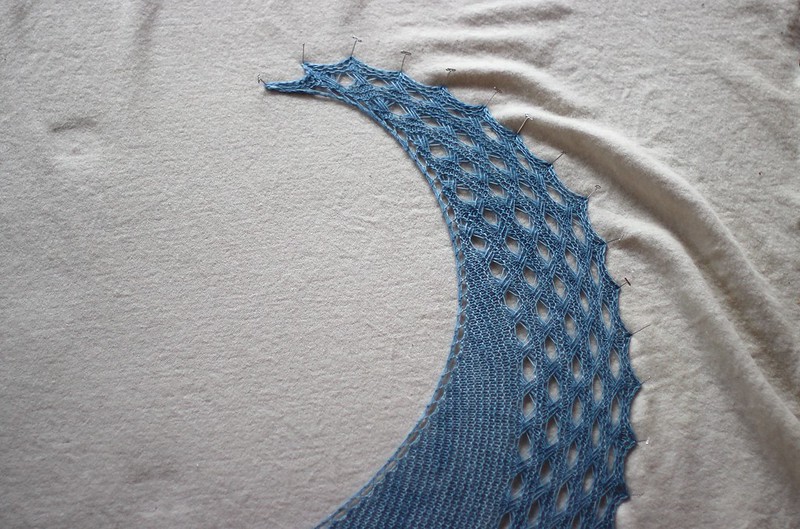
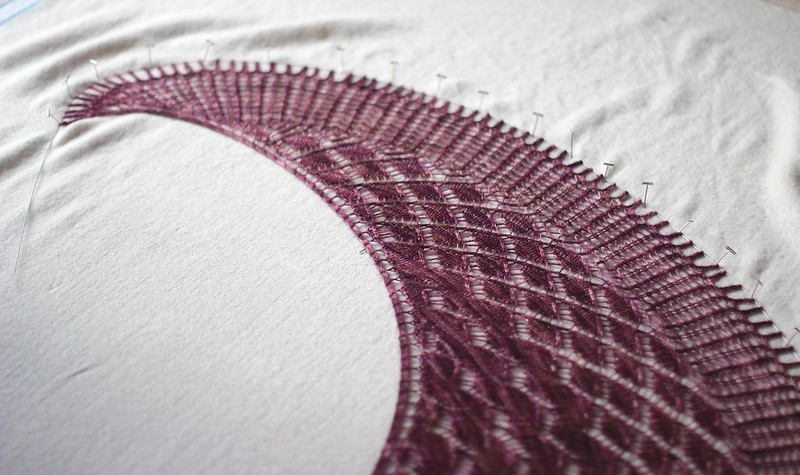
7. Crescent shawls want to scoop inwards and around at the ends into a horseshoe shape. Some (like my Antipodes Shawl) scoop around almost full circle. Play around and see what curve your shawl wants to adopt. I spend a lot of time fiddling with my pins as I go, pinning and repining to get the lace open and the shawl curved.
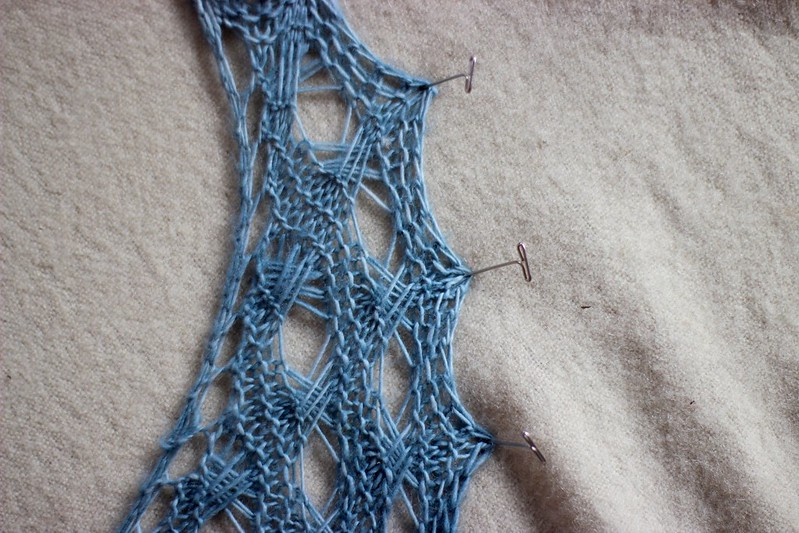
8. You might like to experiment with how you block the border edge. Sometimes the pattern wants to fall into little points.
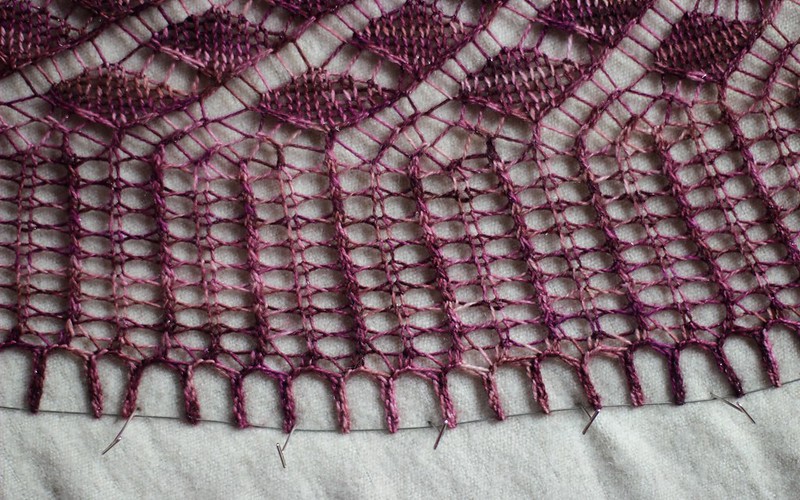
9. Blocking wires make it easier to create curved edges on your shawls and they also make blocking picot points a breeze.

10. I try to get my shawls symmetrical if they're designed that way but it can be super tricky to get them exactly right.
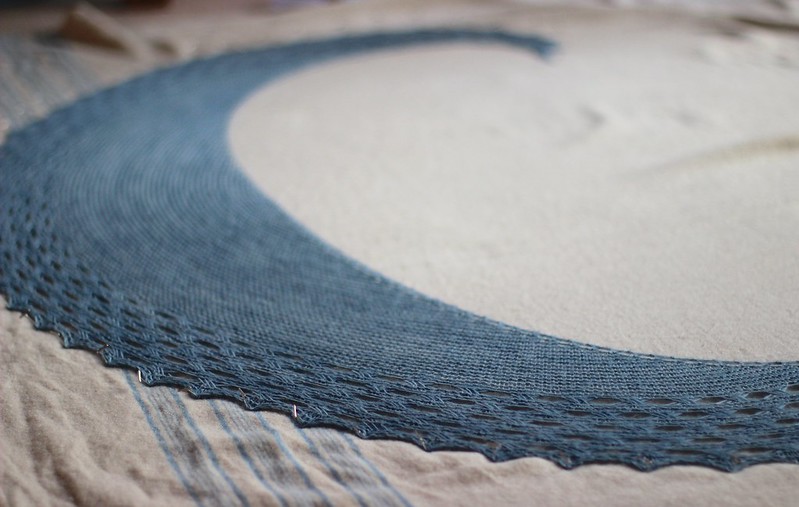
11. Once finished, your shawl may feel a little like a trampoline - tightly stretched. That's how I like mine. A shawl that is blocked tightly in a scooping curve with the top edge stretched, the border opened right out and and the ends curling inwards will drape beautifully. I love a well blocked shawl that falls into gorgeous spirals at the ends when it's worn.
Leave your shawl to dry for a day or so. Then, unpin it, throw it around your neck and ENJOY!
If you still want more information and details, I talk at length about how I block my shawls on my podcast if you fancy watching that too.
Leave your shawl to dry for a day or so. Then, unpin it, throw it around your neck and ENJOY!
If you still want more information and details, I talk at length about how I block my shawls on my podcast if you fancy watching that too.
